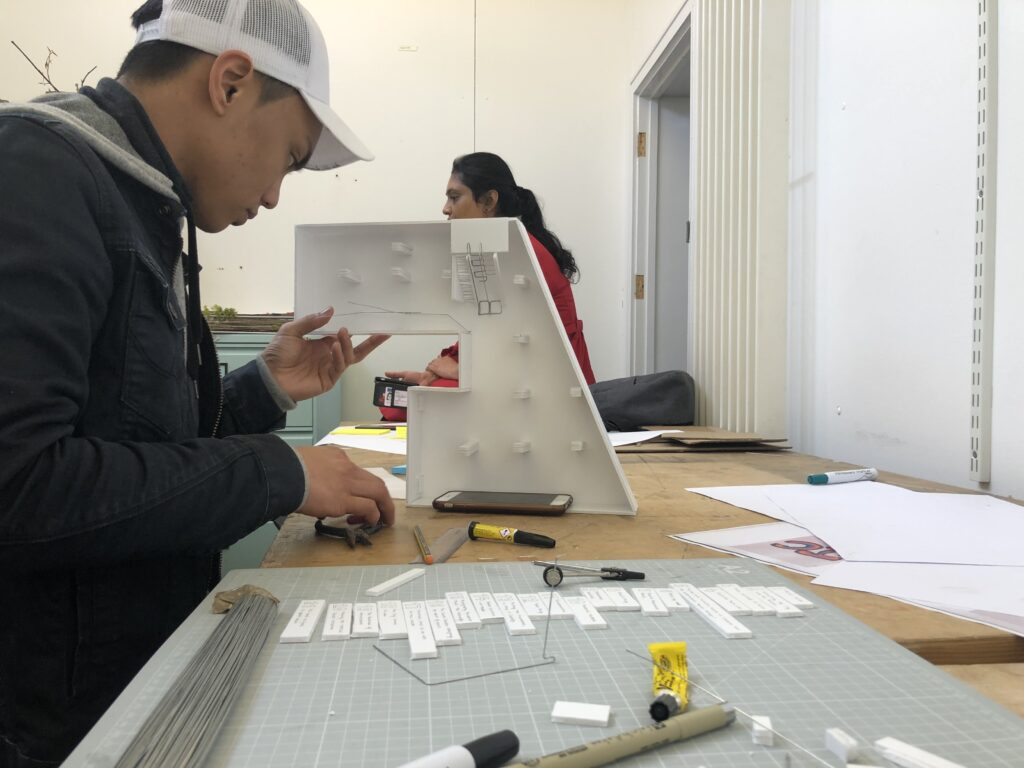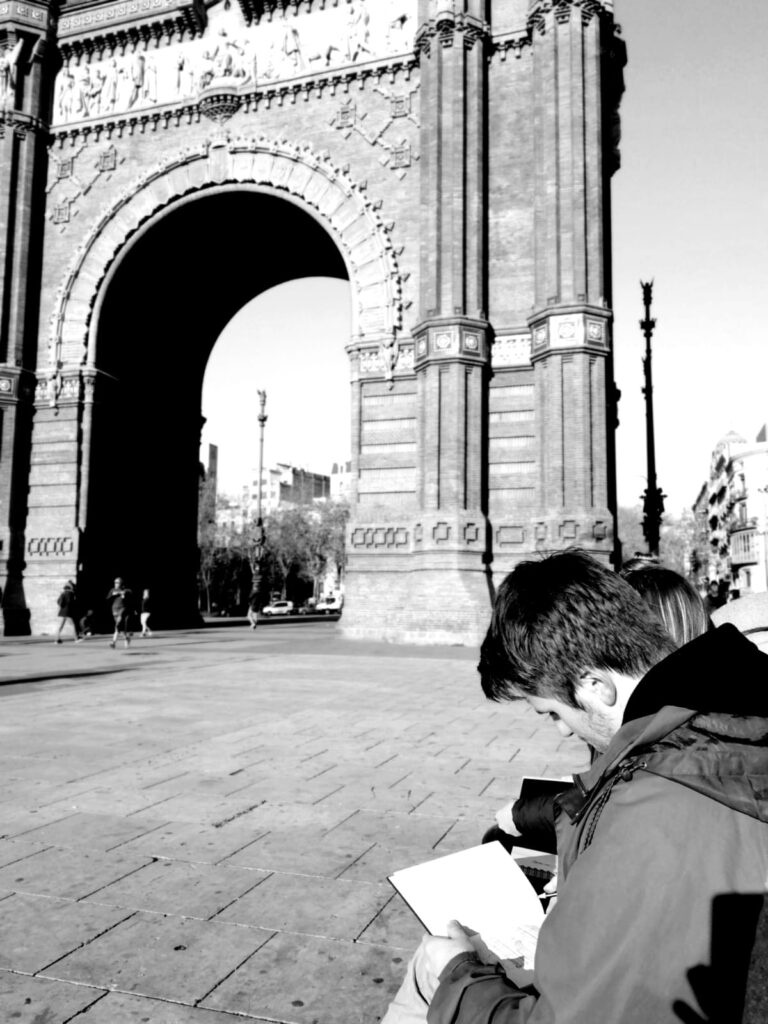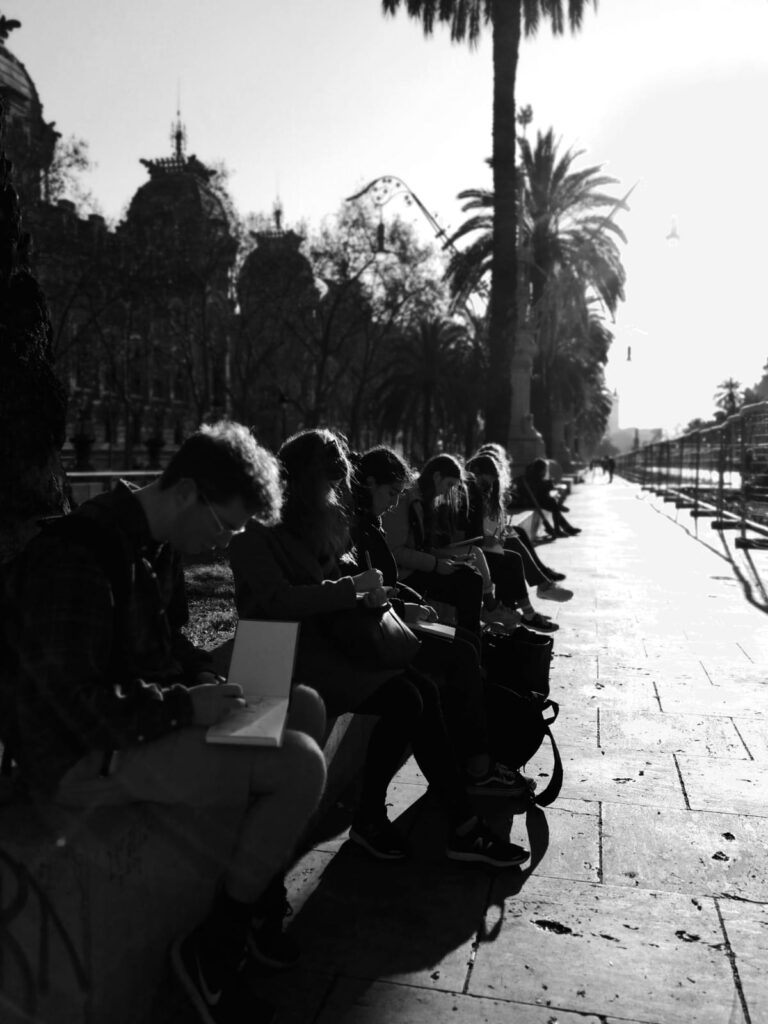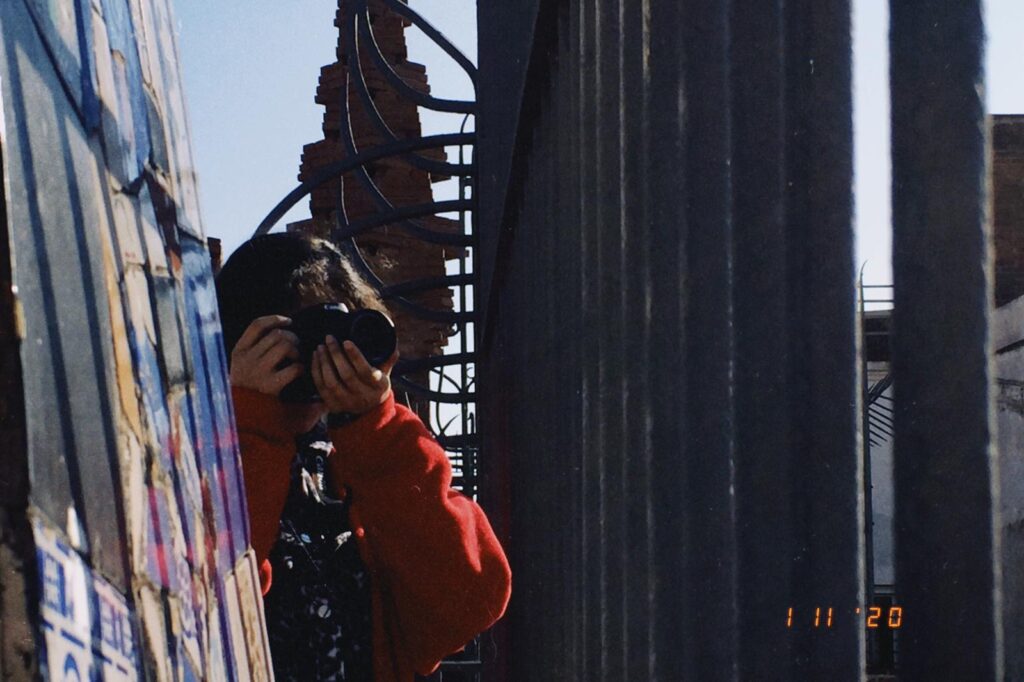Exploring and combining different methods to approach our design work was the primarily focus of this year. To support our development, this module introduced us to image-making, model-making, urban analysis, ethnography, photography, approaching design as an activist and watcher through a series of lectures. The aim was to understand the way a certain method influences architecture.
By choosing one method, an architectural practice and one of its project, we were asked to discover how the chosen approach shaped the meaning, form and experience of architecture reflecting on its political and social context.
Student experiences
“Studying so many design approaches enabled me to look for unconventional ways of finding solutions for the [design] brief. It also made me more aware of numerous routes one can take in their design career. “
-Kasia Klara

“The DPM module significantly improved my understanding of the creation projects. Thanks to the lectures I realize that there are numerous, inspiring approaches to architecture and there is never one right or wrong answer. It made me more open minded in my own design project and initiate many experimentations. I enjoyed writing the DPM essay as it made me understand Libeskind’s thinking process and his projects from the first doodle to the final result.”
-Aleksandra Banas
“The ‘Design Principles and Methods’ module gave me the ability to view the breadth of possible inspirations which an architect can use to come to a conclusion on a design. Understanding first and foremost the primary aim of the brief, and then exploring a plethora of avenues in which to support and expand on it.”
-Cameron Jones
“The DPM module helped me make progress on my design module as the ethnographic methods of architecture that I studied were directly linked to my design module in terms that I chose to write about pet architecture in Tokyo which came as a great help when I was researching precedents for my design module as I was tasked to design a very small living unit in Cardiff City Centre which had similar dimensions to the homes I wrote about in my DPM essay. The direct link really helped me develop my understanding of small homes and how important it is to carry out ethnographic research to design for the user and limited amount of space.”
-Bethan Davies
Investigating the method of drawing – An abstract from the work of Aleksandra Banas
““Micromegas” as one may say it is just a collision of planes, lines and elements usually used in architectural drawings. This juxtaposition creates a futuristic fusion which challenges the accepted order of architecture drawing which nowadays developed the alphabet of its own. In a way this piece is Libeskind evaluation of drawing as a method in architecture. Artist notes that because architects have developed unify sign identification for technical drawing it changed the beauty of creation into problem solving using pre-defined tools.5 However Micromegas are more than just the critique of common symbolism and manner. Libeskind in a skilful way illustrates that although subconsciously drawing is based upon what we already experienced, even if using fixed signs architecture is still a manifestation of the project and designer themselves. With “Micromegas”, he shows spontaneity in this created world of formalisation creating an innovative narrative provoking the architectural reality. This way he proves the experimental nature of the image making method. He clearly takes advantage of drawing which allows him to create pieces impossible to build experimenting with unknow and seeking new horizons making his revolutionary pieces eternal. Since Micromegas are obviously not going to be built one may wonder how does this experimentation relate to his later works?”
– Aleksandra Banas
Ethnographic research – An abstract from the work of Andrew McClements
“If we were to consider ethnography in its traditional sense, the extent of its use would be limited in architecture. Restrictions such as time will undoubtedly limit a true ethnographic research that is undertaken by anthropologists. Yet, the meaning of ethnography is diverse. Atkinson and Hammersley deliberate that ‘for some, ethnography refers to a philosophical paradigm to which one researcher makes a total commitment; for others it designates a method that one uses as and when appropriate.’19 It would be suitable to suggest that Gehl took an approach between ‘these extremes.’ While Gehl encountered limitations, their commitment and focus towards their research allowed them to form ‘thick’ descriptions of their subject.20 Gehl applied this extensive research to locate and build a new, award-winning public space designed for people, proving that ethnography can be used successfully in architecture. Without taking an ethnographic approach, the architecture will lack purpose to those who are intended to use it.”
– Andrew McClements




